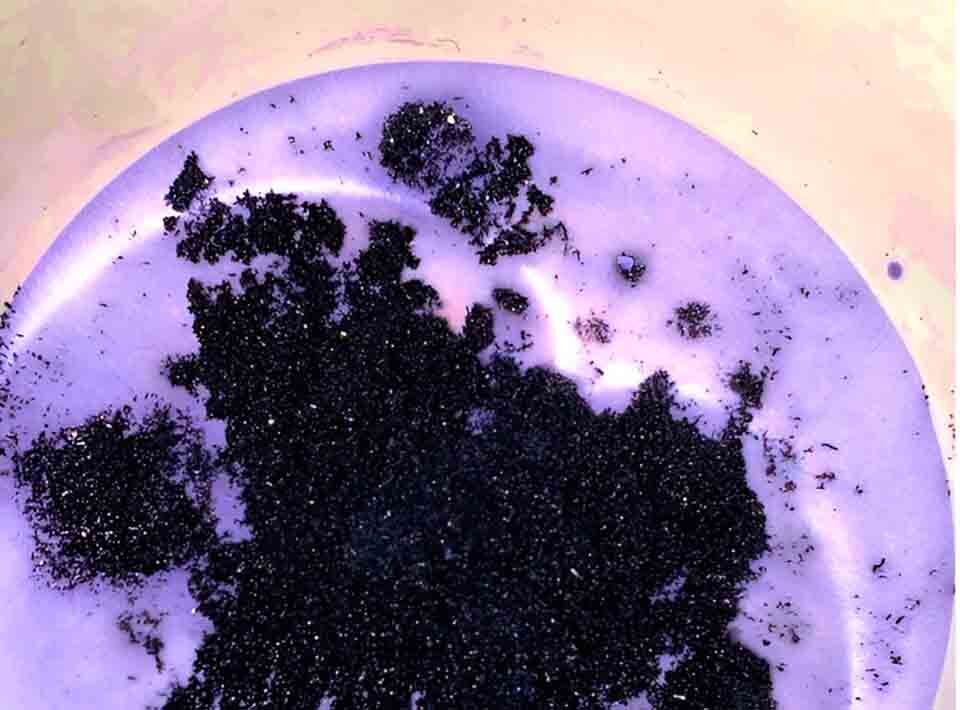Oregon State University Scientists Discover Revolutionary Carbon Scrubbing ‘Goldilocks’ Element

CORVALLIS, Ore. — With a so-called ‘Goldilocks’ level of reactivity- neither too much nor too little, researchers at Oregon State University (OSU) identified a scientific element that could be used as a carbon scrubbing tool.
Published in Chemical Science, the flagship journal of the Royal Society of Chemistry, OSU released a statement on their discovery. The leader of one of nine direct air capture projects (DAC) research projects funded by the Department of Energy, Oregon State’s May Nyman, the Terence Bradshaw Chemistry Professor in the College of Science, was selected to lead in 2021.
The project is part of a $24 million federal effort aiming to develop new methods for DAC, of carbon dioxide (CO₂)- a greenhouse gas linked to climate change that is produced by burning fossil fuels.
The scientists demonstrated the ability of the element vanadium to react with and bind carbon dioxide when combined with peroxide molecule which is an important step to improving technologies that remove carbon dioxide from the atmosphere.
Exploring how certain transition metal complexes react with air to remove carbon dioxide and convert it to a metal carbonate, Nyman and her team made comparisons of reactions in many naturally occurring minerals. Situated near the center of the periodic table, transition metals are so named because with the transition of electrons from low energy to high energy states and back again, the element changes into distinctive colors.
OSM scientists landed at vanadium, named after Vanadis, the ancient Norse name for the Scandinavian goddess of love, reputed to be so beautiful that her tears turned to gold.
CO₂ exists in the atmosphere at a density of 400 parts per million, or 400 molecules for every 1 million air molecules, representing 0.04%, according to Nyman. Finding materials or molecules selective enough, or other reactions with more abundant air molecules- such as reactions with water, that outcompete the reaction with CO₂ in direct air capture, was the challenge facing the team. They synthesized a series of molecules containing 3 parts important in removing carbon dioxide from the atmosphere that work together.
The first part was vanadium, with its range of beautiful colors, and another part was peroxide, which bonded to the vanadium. Being negatively charged, a vanadium peroxide molecule needed alkali cations for charge balance. The researchers used potassium, cesium, and rubidium alkali cations for their study. Nyman also indicated that the collaborators tried substituting vanadium with other metals from the same neighborhood on the periodic table.
Not as effective as tungsten, tantalum, and niobium, but molybdenum was so reactive that it occasionally exploded. They also substituted ammonium and tetramethyl ammonium compounds- the former of which is mildly acidic, for the alkalis, but, puzzling the scientists, these didn’t react at all. When they removed the peroxide, again, there was not so much reactivity, according to Nyman.
She said,
“In this sense, vanadium peroxide is a beautiful, purple Goldilocks that becomes golden when exposed to air and binds a carbon dioxide molecule.”
Noting another valuable characteristic of vanadium-that it allows for the comparatively low release temperature of about 200 degrees Celsius for the captured carbon dioxide, it compares favorably against the almost 700 degrees Celsius required when bonded to potassium, lithium or sodium, and other metals used for carbon capture.
The ability of vanadium to rerelease the captured CO₂ means the carbon capture materials can be reused, and with the lower temperature, less energy is expended leading to a lower cost. Nyman explained that there are clever ideas about the reuse of captured carbon that are already being implemented – for example, growing plants by piping the captured CO₂ into a greenhouse.
With brand new carbon filtering facilities springing up around the globe, the technologies for mitigating CO₂ at the point of entry into the atmosphere- for example from power plants, are better developed. But both applications of carbon capture will be needed if the Earth is to avoid the worst outcomes of climate change according to scientists.
Nyman expressed pride at the hard work of the graduate students in her lab, Zhiwei Mao and Karlie Bach, and undergraduate Taylor Linsday.
She is grateful to Tim Zuehlsdorff, who supervised Ph.D. student Jacob Hirschi on the computational studies that explain the reaction mechanisms, other Oregon State authors on the paper which included Tim Zuehlsdorff, assistant professor of theoretical/physical chemistry, and postdoctoral researcher Eduard Garrido, as well as Eric Walter of the Pacific Northwest National Laboratory and Casey Simons of the University of Oregon who also took part in the study.
